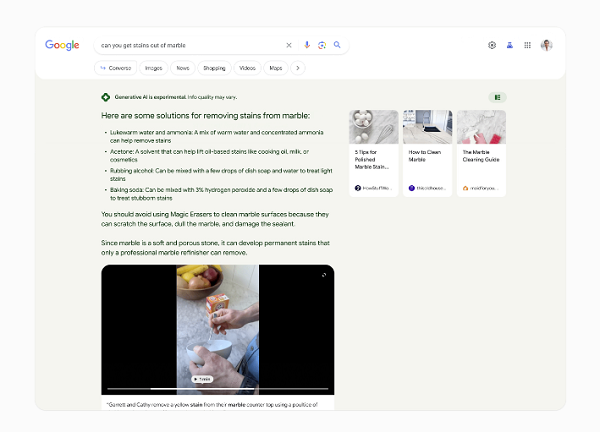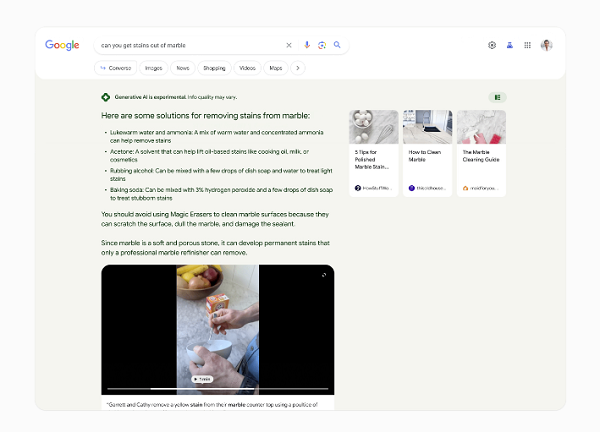If you’re not posting how-to videos as part of your digital marketing strategy, this could prompt you to update your approach.
Now, as part of its new AI-powered Search Generative Experience (SGE), Google will display contextually relevant video results from YouTube at the top of the Search results page.

As you can see in this example, within its new generative AI element, Google will now look to provide visual matches for certain queries, which could end up giving significantly more exposure to how-to content.
As explained by Google:
“Sometimes, it’s more powerful to understand something by seeing it, so we recently brought images to even more AI-powered overviews. For example, when you search for something like ‘tiniest birds of prey’, you’ll quickly be able to reference what the bird looks like and get relevant information from the web. And over the next week, you’ll begin to see videos within some overviews where it’s helpful to see something in motion, such as a demonstration of a yoga pose, or how to get stains out of marble.”
So the first example, images in results, is seemingly not much different to what Google Images already displays within SERPs. But specific how-to content could get a lot more reach, with dedicated videos appearing within these AI-generated answers, and directly accessible in-stream.
Google’s still taking a cautious approach with its generative AI elements, despite Microsoft going all-in with its OpenAI integrations in its search engine Bing. That’s helped to drive a significant boost in Bing downloads, but Google has expressed concern with the reliability of the results produced by generative AI, which is why it’s still gradually testing and iterating its tools, while it’s also working to integrate them without impacting its core ad business, through negating the value of promoted links.
In-stream visual elements will have an impact in this respect, so you can also expect Google to be very measured on this front as well, but it is working on new ways to bring its generative AI tools into search, which is important to note for all of those tasked with SEO responsibilities.
Over time, these will significantly change user discovery behaviors, while each update will also have its own impacts. It’s worth considering what those may mean, both on a smaller scale, and for when they get a broader launch, because inevitably, more and more of these tools will eventually become a part of our everyday search experiences.
In addition to this, Google’s also updated the speed at which it produces its SGE results, while it’s also added dates to SGE-provided links for more context.
It’s interesting to see how Google’s looking to improve Search with these new tools, and again, to consider what that means for your SEO process.



